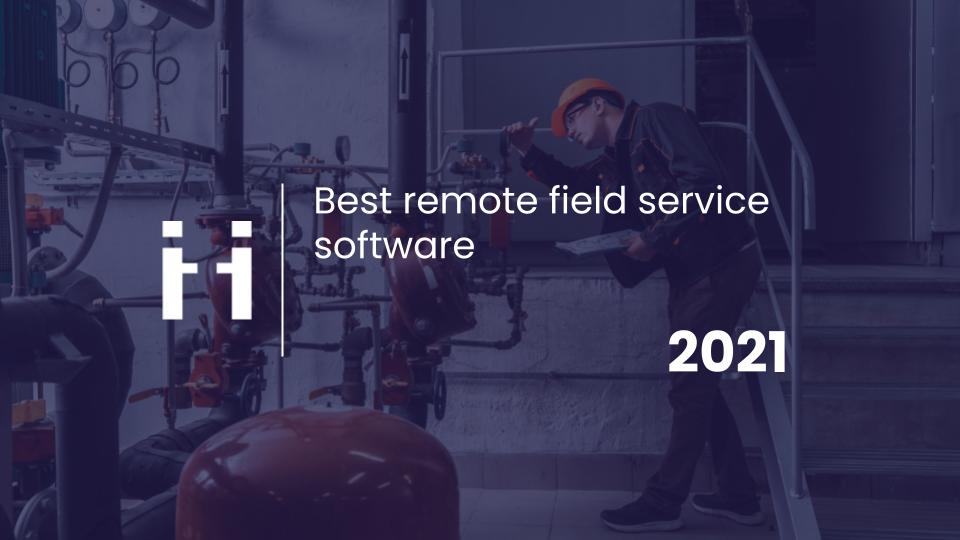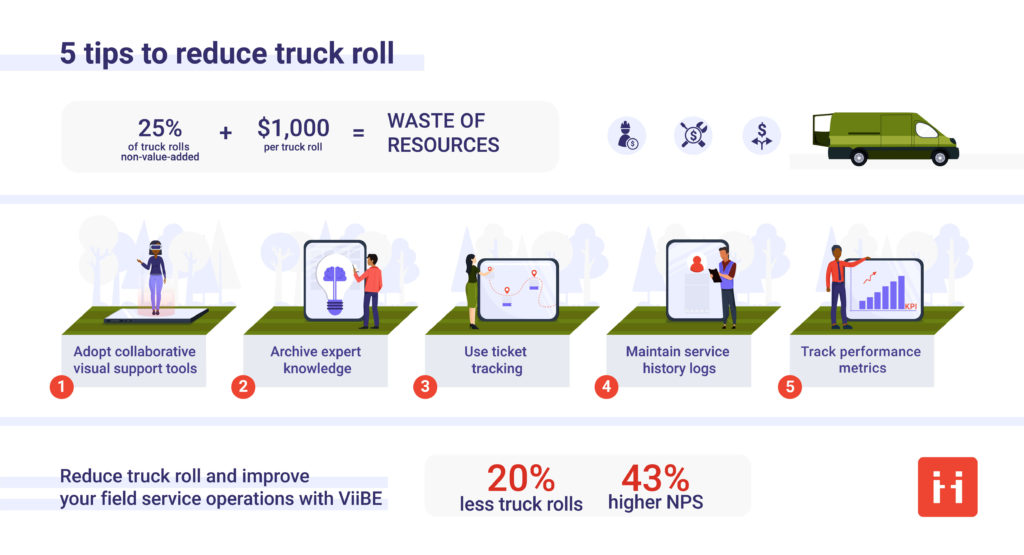
Share this article
Share this article
Remote field service software is the technology used to optimize field service management by helping technicians and customers access expert assistance. Field servicing is the process of undertaking any form of installation, servicing, maintenance, repairs and inspections away from the office or workshop.
Types of businesses that rely on effective field services are utility companies, green energy providers, telecoms, offices, and production plants where installation, maintenance, repairs, and servicing are contracted out to facility management companies. It also includes maintaining, servicing, and repairs to the utilities in domestic homes and small retail stores, and service establishments such as cafés, bars, and clubs.
Field service management software helps companies track, manage, and optimize all resources (both personnel and infrastructure) related to field service management operations. It can help managers and technicians process job orders, automate scheduling and dispatch, keep track of service and repair tasks, manage customer service contracts, collect payment and more.
In recent years, remote field service software has been developed to integrate all areas of field service management, providing seamless integration across all areas of the field servicing process.
This includes organizing work schedules, maintenance appointments and projected completion times. Arranging engineer dispatch time with any required spares for specific jobs. Keeping an inventory of stock, and parts transferred to engineers and technicians. Arranging arrival times with clients giving due consideration to service agreements, and tracking each job from creation to completion.

The best remote field service software is that which suits your particular needs and allows you to easily integrate your favorite tools and apps, such as Outlook email and calendar, Zendesk, Microsoft Dynamics, or IBM Maximo. Visual support should also be included, making it easier and safer for onsite technicians to explain any snags or problems to the office or another senior engineer.
At a glance, the benefits of using field service software include:
• Streamlining work orders
• Optimizing mission scheduling
• Automating route scheduling and scheduling
• Reducing carbon footprint
• Improving technician communication
Even a small business employing just four or five staff members can benefit from using remote field service software. Workday efficiency will improve with fewer client call-backs. Engineers will arrive on time, with the required tools and equipment for each job.
Carbon footprints can be reduced by paperless invoicing and contactless payments, as well as due to remote visual support rather than dispatches on-site. Engineer and customer support can be improved with faster response times, and profitability increased by a happier, more organized working day.
The use of computerized maintenance management software (CMMS) or enterprise asset maintenance (EAM) can help with a range of work order management tasks such as:
Preventive maintenance refers to the scheduled, routine maintenance of assets, so they can continue to run smoothly and optimally. Preventative maintenance prevents costly equipment failure. Maintenance strategies often include regular maintenance checks in order to fix potential problems before they occur.
The servicing and replacement of worn parts before they fail, plays a big part in modern manufacturing. It reduces downtime and maximizes profitability, and can easily be incorporated into remote field service software.
Using remote field service support ensures your engineers and technicians are never wholly alone wherever they are working. The addition of visual support ensures you never have to make do with half a picture when an engineer or client is explaining any problems.
When things refuse to do what they are meant to, most people are prepared to do at least a little research, to see if they can rectify the problem before contacting a call center, manufacturer, or service agent. Likewise, experienced engineers are likely, sooner or later, confronted with an issue that is out of the ordinary.
Knowledge sharing in the form of a FAQ portal, knowledge pages, and even visual support in the form of ‘how-to’ videos, can often get the problem resolved by the client or technician. Without the need to raise a new job number.

Field service KPIs are metrics that track the performance of daily operations while highlighting potential problems or areas for improvement in field service operations. KPIs are a necessary part of FSM. Without them, teams and technicians are unaware of how well they are performing towards the company goals.
In the field service sector, Key Performance Indicators can be narrowed down to a few main performance measures, to provide an insight into business performance and viability against its main objectives. These can include the following three metrics.
If established clients are failing to renew contracts, there is usually something wrong with the system. It is not necessarily about cost. Poor service, failure to attend on time, or unsatisfactory customer service can all have a bearing on why clients are looking elsewhere.
Every time a service truck starts to move, it’s considered a ‘truck roll’. The majority of businesses have very little idea of the true cost of every single journey. Vehicle insurance, motor taxes, servicing, and repair are just the tip of the truck roll iceberg. The engineer’s hourly rate, and that of his mate if it’s a two-man crew, have to be multiplied by the time lost and additional administration costs because the job couldn’t be completed.
Did you know it’s estimated that over 25% of service calls require a second visit to complete the job? Using remote field service software, one can drastically cut the number of unnecessary truck rolls and greatly increase the profitability of the business.
Unnecessary truck rolls include engineers attending sites they can’t access (poor customer relations), technicians attending jobs with the wrong tools, technicians not having the required spares, filters, poor organization, etc.

With all the required apps integrated into one field service software package, clients will begin to notice the difference, with less machine downtime and greater profitability.
It is estimated over 30-billion devices worldwide are connected to the Internet of Things. Field service companies also need to make the most of the latest technologies and begin to embrace the benefit of remote field service software if they are to stay ahead of the pack.
Free E-book available now!